Called Out of Darkness Read online
Page 12
“taking all this.” There were even people who came to Stan to request funds for various projects, laying out their demands to him, in front of me, as if I did not exist. 1 3 9
But this was not significant.
In the main, I ceased to be somebody’s wife. I became the author Anne Rice, and generally when people spoke to me, they had something to say to me and it was about my work. And that meant it was about my mind—this genderless and oversensuous mind.
I didn’t realize this immediately. I’ve never realized anything immediately in my life. But in truth, my life had changed. I was that person now in the eyes of the world that I had always been in my own eyes. Personhood had come at last. The goal of my life had been attained.
Another dramatic event transformed my life at this time and, very possibly, saved it. I gave birth to a healthy and beautiful son, Christopher, on March 11, 1978. Stan and I were elated. But within less than a year, we became painfully conscious of our heavy drinking, and the impact this was having on our care for our son. Neither of us wanted this priceless child to grow up in a household with two drunken parents. On Memorial Day of 1979, we made a pact never to drink again, and though I violated the pact that summer, when I went home to New Orleans for the funeral of an uncle, I took my last drink the night before flying back to California. If Christopher had not come to us at that time, it is very likely that heavy drinking would have killed Stan and me, or so diminished our existence and our capacity to work that we would have experienced a slow and ugly disintegration. We’d confronted this possibility many a time. But our resolves to stop drinking had never been lasting. The love of Christopher, and our hopes and dreams for him, now provided the incentive we needed. Though we did not join any C a l l e d O u t o f D a r k n e s s organization or 12-step program, we maintained sobriety from then on.
As I look back on it, I think that Christopher was aptly named, because he brought a saving grace into our lives that was all but miraculous. A child of exceptional gifts, he surprised us, challenged us, and educated us over the years in countless ways, as only a child can do, and he is now a highly successful novelist. He was and is a treasure. And he was as much a part of my life from then on as any success I derived from my writing.
We were a trio, Stan and Christopher and I, as our existence underwent remarkable changes. I wrote twenty-one books before faith returned to me. And in almost all these books, creatures shut out of life, doomed to marginality or darkness, seek for lives of value, even when the world tells them they cannot have such lives. In all of these works, gender doesn’t matter. What matters is the personality of the individual, and his or her desires. Historical settings are of huge importance, and they are used much like the speculative settings of science fiction writers, to establish a matrix in which ideas can be tested and explored, to establish a laboratory in which experiments in loving and suffering and persevering can be completed with success. Of course the historical research for my books drew me into periods of history that I deeply loved; this was natural to me, to research eighteenth-century Venice, or Renaissance Florence. I was in full control of characters both masculine and feminine. I was both.
And the historical research for my novels became one of 1 4 1
my greatest passions, and certainly the new source of education, as I had long left college behind. I wrote by instinct.
I poured out the darkness and despair of an atheist struggling to establish bonds and hopes in a godless world where anything might, and could, happen, where happiness could be torn away from one in an instant, a world in which the condemned and the despised raised their voices in protest and song.
Over and over I wrote about outcasts—young people of color in pre–Civil War New Orleans who could not be fully part of white society; castrati opera singers in eighteenthcentury Italy, who could not marry under the laws of the lands in which they became superstars adored by all; vampires who could not endure the light of the sun and were doomed to fall in love with the beauty and sanctity of the human lives they destroyed. I wrote about witches—psychic humans with the capacity to attract supernatural forces that seem to obey no laws of right and wrong. I wrote about the Jews of ancient Babylon, struggling to maintain their autonomy as a people “in a strange land.”
Very few of my characters were females.
When I did write about a feminine protagonist, I sensed a different response to the plot and to the character on the part of critics. Love scenes involving males were treated with dignity. A book involving a man and woman was dismissed as “a cheap romance.” I took careful note of this. I came to avoid using women except in ways that wouldn’t invite this dismissal. Still it happened. I don’t say this lightly. Critics had it C a l l e d O u t o f D a r k n e s s
“in” for the female characters I created in a way that they never had it “in” for the males.
This is still the case.
Readers reflected this somewhat as well. They might adore a melancholy hero like the vampire Louis, or fall in love with the passionate and irrepressible vampire Lestat. But they were offended by the vampire Pandora, and put off by the young Mona Mayfair, who was in her own way no less interesting than the male characters in the book. The heroine of my novel Belinda was actually criticized for not being a typical teenager! And this from readers who had accepted a fourteen-year-old male Creole genius or tragic young vampires cursing Heaven with raised fists. Lestat’s boasts were received as charming. Mona was viewed as impertinent. Belinda was ignored because she was not a stereotype. In sum, if I created a woman the way I wanted that woman to be, for many people this didn’t work. My female characters were measured in terms of gender. With male characters I could achieve just about anything I wanted to achieve. Male characters didn’t really have any gender. Female characters were cursed and confined by it in the minds of those who read the books.
I can’t say I reacted literally to this experience. I was aware of it; it influenced me subconsciously or consciously in fragmented form. I did not set out to do anything about it. But it had its inevitable effect.
But by and large, I wrote what I felt impelled to write. I was the “he” of my fiction. Or the “she” of it in those few times when a woman entered the scene.
1 4 3
Perhaps the most significant book I wrote before my conversion to Christianity was the novel Violin. There are many complex reasons why this book was important to me, why it involved pain and exposure that some of the other books did not. But I am convinced to this day that the reason my readers largely overlooked it was the fact that it involves a woman’s creative experience and not that of a man. If a gorgeous gay man had taken the place in the book of Triana Becker, the public response might have had considerably more depth. Whatever the case, the book is not only about grief and faith, and the redemptive potential of art—this it has in common with all my books—but it is also about my childhood, about the chapel in New Orleans where I first experienced faith in God. It’s about the losses I suffered as a child, and about my core beliefs regarding art and blood—
metaphoric blood and literal blood. It is perhaps the cleanest allegory of my own creative life. However, allegories of my own creative life fill my other books, including most especially The Vampire Armand and the novel Blood and Gold. Why I managed to become such a financial success at all is a bit of a mystery. These books were each eccentric, one differing violently from the one before it, and the entire oeuvre made almost no concessions to the marketplace at all. True there is plot, character, spectacle, and tragedy in these books, but the books are not easy to read, and they are too eccentric to be easily described. The only people who provide easy descriptions of them are people who have never read them. Because these books involve the supernatural, they are apparently extremely easy to condemn or dismiss. C a l l e d O u t o f D a r k n e s s But success I enjoyed, no matter what turn in the road I took.
Let me suggest one reason why the books found a mass audience. They were written by someone whose aud
itory and visual experiences shaped the prose. As I’ve mentioned over and over in this book, I am a terrible reader. But my mind is filled with these auditory and visual lessons and, powered by them, I can write about five times faster than I can read. Somehow this led to my developing a style which sought to make real for the reader the acoustic and iconic world in which I’d been formed as a child. Almost all of my key learning had been imprinted on the right side of my brain. Drawing on the left side of my brain, apparently, I used words to go beyond words.
Also because I wasn’t “literary” by nature, I looked to oldfashioned models in my writing. I’ve mentioned this above. I didn’t “get” modernism. I didn’t “get” pedestrian realism, the values of which essentially controlled “high literature” of the 1970s, 1980s, and 1990s. I didn’t care about pedestrian realism or ordinary people. Mediocrity meant nothing to me, and a literature devoted to anatomizing mediocre or “typical” people was uninviting to me. In fact, it was almost impenetrable to me.
I wanted to tell stories of great lifetimes, of spiritual quests, and of tragic adolescent discovery, and of great moral battles between great individual souls and the social world. These aren’t what anyone would call contemporary themes. I also wrote passionately about characters whom I personally loved. I was never interested in exposing or destroying or 1 4 5
punishing characters. I never became obsessed by those whom I did not like. So my writing lacked irony and cynicism, and it lacked sarcasm. And in this I was not modern but appealed rather to an audience that wanted to be swept up in the spiritual journey of a hero rather than proceed through the cooler pages of the fiction of alienation and cleverness. My work isn’t critical of society, nor does it affirm nothingness. It’s romantic in the full old-fashioned sense of the word. It can be seen as naïve. And certainly it can be dismissed as sentimental. As already mentioned, I also believed intensely in spectacle—flamboyant behavior, violent clashes, a certain swashbuckling type of action which I’d learned from radio and from the films of the fifties that had made such a strong mark on my nonliterate mind. In my work, I strove for the high-pitched beauty of Michael Powell’s The Tales of Hoff- mann or The Red Shoes.
That there was an audience for this warmer approach to fiction isn’t surprising. The high literary pedestrian realism of the 1970s tended to scorn the “mass audience.” I didn’t scorn the mass audience. I was part of it. In fact, I embraced the mass audience with a certain recklessness that often elicited from intellectuals a blatant contempt.
Countless times people out of the mass audience have come up to me and said, “Yours are the only books I can read.” Others have said, “Yours are the only novels I’ve ever read.” Still others have said, “Your novels started me reading. After I read you, I read everything. But before that I never read at all.”
C a l l e d O u t o f D a r k n e s s Of course the novels, like any novels, are only fully accessible to those who can in fact read them, can in fact be swept along by the decided rhythm of the sentences, and those who can respond to the choice of adjectives as well as the choice of concrete nouns.
But concrete nouns and action verbs actually underpin all my writing. And there is always urgency, a driving pace. There is, as mentioned above, a beginning and middle, and also an end, though often the end refuses to be an end in the artificial sense and makes the reader furious. In other words, the novels for all their strangeness usually have a conventional feel to them in terms of story, a feel somewhat like that of Dickens or Brontë, the first writing teachers I ever had. As for the revolt against modernism, my writing doesn’t in fact reflect the war on modernism that was part of my earlier Catholic world. The books are too transgressive, they’re too committed to sexual freedom and gender equality to be part of that old Catholic war. They reflect, rather, the changing contemporary world which I pretty much ignored. The appeal is for the equality of persons, and for the redemption of sexuality as something which is not inherently sinful or sin related.
The books do protest the severity of modern architecture and painting, and the dissonance of modern music. They go back into the baroque, the rococo, and the Romantic, but they take with them decidedly optimistic visions of sexuality and the supremacy of art. They refuse to be classified as any one type of writing. They attract all sorts of readers, and there is no consensus 1 4 7
among even the most ardent fans of the books as to what the books mean.
Every time one of the books is adapted in film or onstage or for television, there is a huge disagreement amongst the people involved as to what the book is about. And there is a subsequent controversy among the members of the audience as to what the books are about.
Throughout the years that I created these books one by one, some during periods of hypomanic happiness, others during periods of black despair, I paid little or no attention to these controversies except to now and then become hysterical and angry in my declarations as to what the books were trying to do. Lot of good that did. Oftentimes what interested me in a particular book went entirely unnoticed by the readers talking to me about it, or writing about it. And certainly most of the newspaper and magazine reviews had little or nothing to do with my ambitions or whatever I might have achieved. One could write a book about all this. Perhaps I will in the future. Right now I prefer not even to write a chapter. What matters here is this:
These books transparently reflect a journey through atheism and back to God. It is impossible not to see this. They reflect an attempt to determine what is good and what is evil in an atheistic world. They are about the struggle of brothers and sisters in a world without credible fathers and mothers. They reflect an obsession with the possibility of a new and enlightened moral order.
Did I know this when I wrote them? No.
C a l l e d O u t o f D a r k n e s s But the research I did for them, the digging through history, the studying of ancient history in particular, was actually laying the ground for my return to faith. The more I read of history—any history—the more my atheism became shaky. History, as well as Creation, was talking to me about God. The great personalities of history were talking to me about God.
In particular, the survival of the Jews, which I had studied so keenly for the novels Servant of the Bones, and Pandora, and Blood and Gold, was talking to me about God. I was seeing patterns in history that I could not account for according to the theories of history I’d inherited in school. I was seeing something in the survival of the Jews in particular for which there was no convincing sociological or economic explanation at all. A great love of the Jewish people began to burn in me, a love of this tribe that had survived since the most ancient times into the present day. I conceived a fierce curiosity about them, and everything pertaining to them. I was drawn to them in their piety and integrity. And I wanted to know how Christianity had arisen from their religion, and how, above all, had it managed to take the Western world by storm. If any one “thing” in all my studies led me back to Christ, it was His people, the Jews.
Now I had grown up knowing nobody who was Jewish, until a certain time in my early teens when an Orthodox Jewish family rented a flat at the end of our block. Our house faced St. Charles Avenue; their house faced Carondelet. How we became aware of them, I don’t recall. I remember the 1 4 9
father of the family singing in Hebrew, and my mother remarking that he was a cantor. She listened to him and drew my attention to listening to him, with palpable delight. She spoke of him and his family with a certain reverence. At that time I was a member of the Legion of Mary, and part of what we did in that Catholic group was good deeds. I took it upon myself to babysit for the brilliant children of this Orthodox Jewish family when the parents went to the synagogue, or even out on the town. This was a good deed I did for no pay. The children included a brilliant boy named Benjamin and a brilliant girl named Clara. These children spoke probably more than three languages. I didn’t know where they had come from but they told horrific stories of war—of houses wrecked,
of rats jumping into cradles, of hardship beyond anything I’d ever personally heard described. They were cheerful and brilliant; the parents did not speak English and we communicated by gesture and sign. The cantor had a black beard and he wore a yarmulke, and his singing had an unearthly beauty to it that I loved. It was a tragedy to me when this family moved away. My last night at their house was spent sitting in the doorway guarding it, as they were in the process of moving, and I spent this evening in conversation with a young man who knew the family, an immensely attractive and mysterious person who always wore a hat. I recall speaking of spiritual things with him, of my desire to be a nun. He expressed admiration for women who gave their lives to their religion. I explained that we weren’t giving our lives to our religion, we were giving them to God. He showed a respect for this. C a l l e d O u t o f D a r k n e s s Indeed his entire manner was serious and agreeable. He explained to me why the family I so loved was moving to New York. “There are not many people like them here,” he said, “but there are a lot of people like them in New York.” I was happy for them, but I missed them. I never forgot them. I wonder today what became of Clara and Benjamin, and the baby in the crib whose name I don’t recall. Let’s come back to 1998. I’m in New Orleans. I’m a successful writer. I’m thinking all the time about the Jews, about how much in common that family had with the Jews of history, the Jews emerging from the pages of the history books I’m reading about ancient times.
Of course by this time I’d had innumerable Jewish friends, and of all my close friends, they had been the most spiritual and the most intellectually passionate. Though secular people in the main, they retained a theological way of looking at life, a deep moral pressure to do “what was right.”
They were highly artistic, and artistic principles were mixed in with their fervent attitude towards life. They seemed to have a vision of life that was religious, and at times even mystical, in that they believed in a value to art and good behavior which could not necessarily be justified by social custom. What had my experience with Catholicism been up to this time? Just about nil.

 Interview with the Vampire
Interview with the Vampire Christ the Lord: Out of Egypt
Christ the Lord: Out of Egypt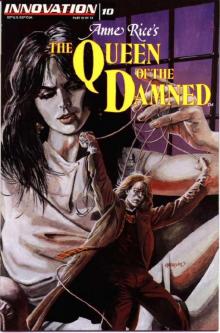 The Queen Of The Damned
The Queen Of The Damned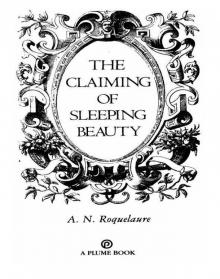 The Claiming of Sleeping Beauty
The Claiming of Sleeping Beauty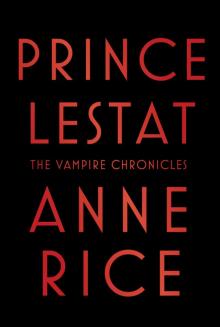 Prince Lestat
Prince Lestat The Master of Rampling Gate
The Master of Rampling Gate The Vampire Lestat
The Vampire Lestat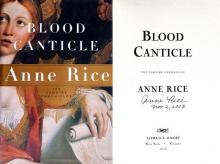 Blood Canticle
Blood Canticle Beauty's Release
Beauty's Release Pandora
Pandora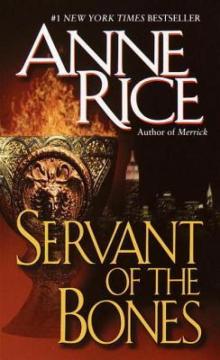 Servant of the Bones
Servant of the Bones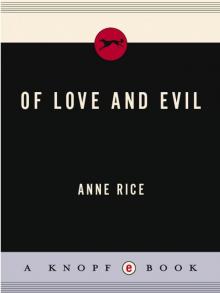 Of Love and Evil
Of Love and Evil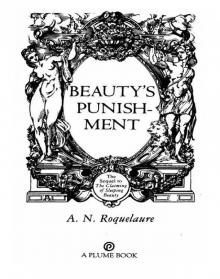 Beauty's Punishment
Beauty's Punishment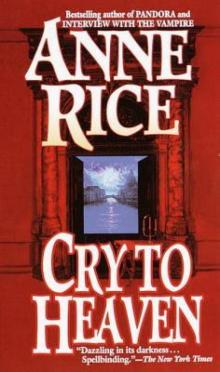 Cry to Heaven
Cry to Heaven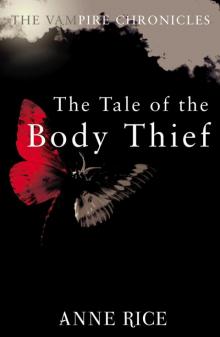 The Tale of the Body Thief
The Tale of the Body Thief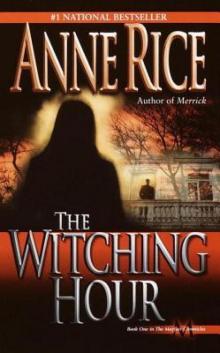 The Witching Hour
The Witching Hour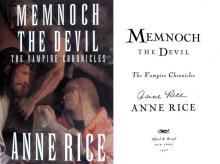 Memnoch the Devil
Memnoch the Devil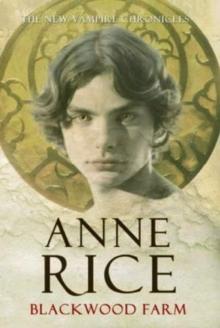 Blackwood Farm
Blackwood Farm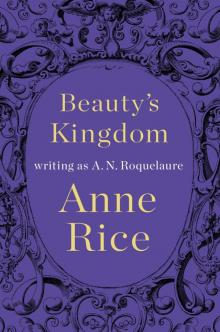 Beauty's Kingdom
Beauty's Kingdom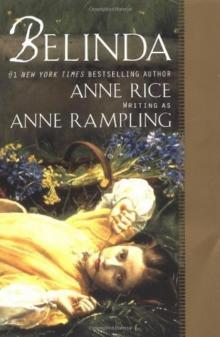 Belinda
Belinda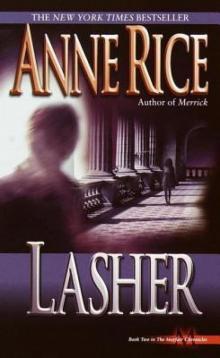 Lasher
Lasher Vittorio, the Vampire
Vittorio, the Vampire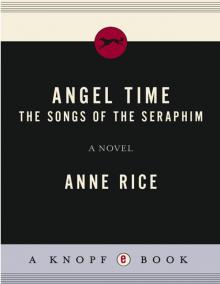 Angel Time
Angel Time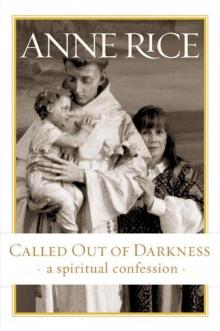 Called Out of Darkness: A Spiritual Confession
Called Out of Darkness: A Spiritual Confession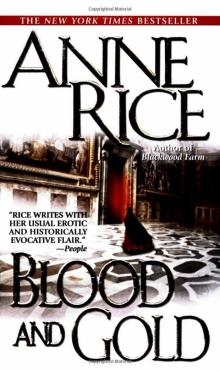 Blood And Gold
Blood And Gold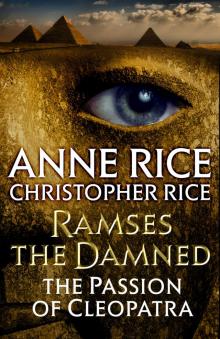 The Passion of Cleopatra
The Passion of Cleopatra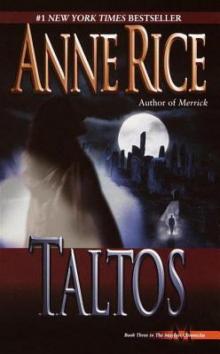 Taltos
Taltos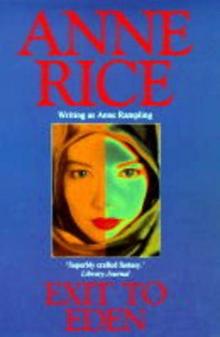 Exit to Eden
Exit to Eden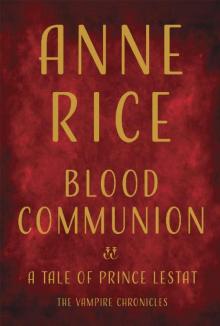 Blood Communion (The Vampire Chronicles #13)
Blood Communion (The Vampire Chronicles #13)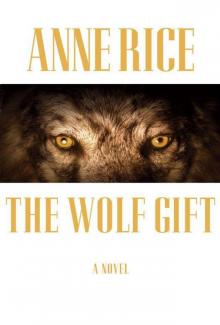 The Wolf Gift
The Wolf Gift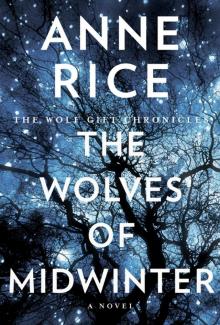 The Wolves of Midwinter
The Wolves of Midwinter Prince Lestat and the Realms of Atlantis
Prince Lestat and the Realms of Atlantis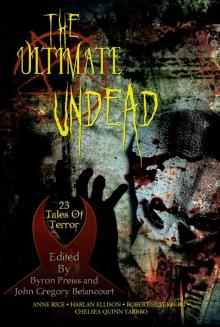 The Ultimate Undead
The Ultimate Undead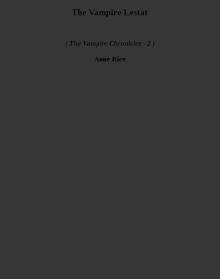 The Vampire Lestat tvc-2
The Vampire Lestat tvc-2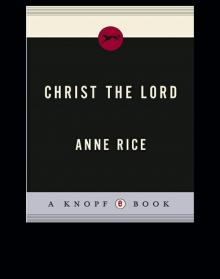 The Road to Cana
The Road to Cana Taltos lotmw-3
Taltos lotmw-3 Merrick tvc-7
Merrick tvc-7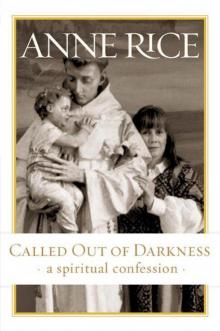 Called Out of Darkness
Called Out of Darkness Pandora - New Vampires 01
Pandora - New Vampires 01 Bllod and Gold
Bllod and Gold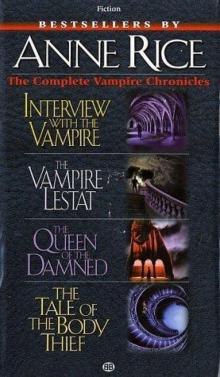 The Queen Of the Damned: Vampire Chronicles
The Queen Of the Damned: Vampire Chronicles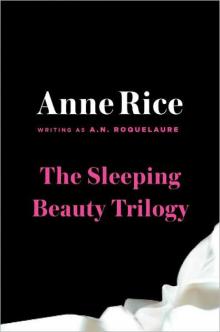 The Sleeping Beauty Trilogy
The Sleeping Beauty Trilogy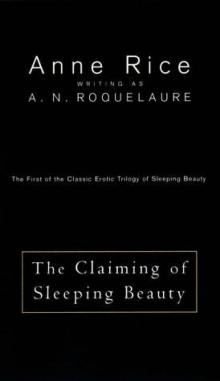 The Claiming of Sleeping Beauty b-1
The Claiming of Sleeping Beauty b-1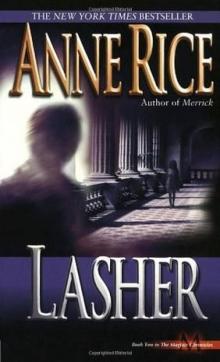 Lasher lotmw-2
Lasher lotmw-2 The Tale of the Body Thief tvc-4
The Tale of the Body Thief tvc-4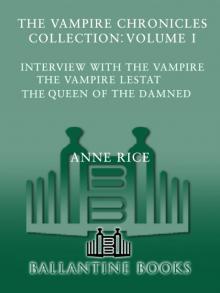 The Vampire Chronicles Collection
The Vampire Chronicles Collection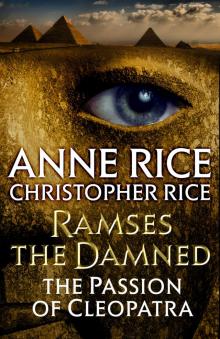 Ramses the Damned
Ramses the Damned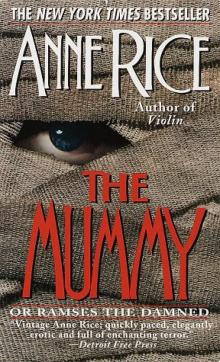 The Mummy - or Ramses the Damned
The Mummy - or Ramses the Damned Vittorio, The Vampire - New Vampires 02
Vittorio, The Vampire - New Vampires 02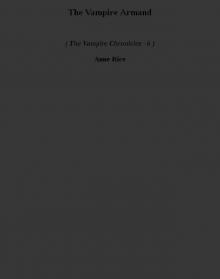 The Vampire Armand tvc-6
The Vampire Armand tvc-6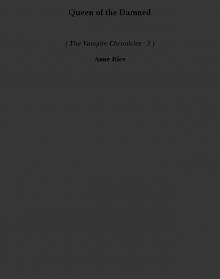 Queen of the Damned tvc-3
Queen of the Damned tvc-3 The witching hour lotmw-1
The witching hour lotmw-1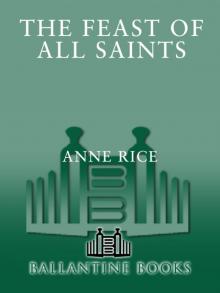 Feast of All Saints
Feast of All Saints Queen of the Damned
Queen of the Damned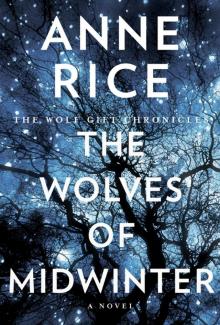 The Wolves of Midwinter twgc-2
The Wolves of Midwinter twgc-2 The Mummy
The Mummy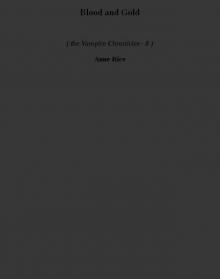 Blood and Gold tvc-8
Blood and Gold tvc-8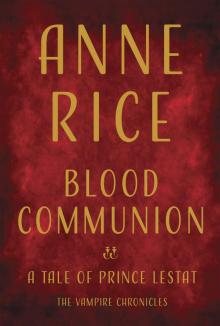 Blood Communion
Blood Communion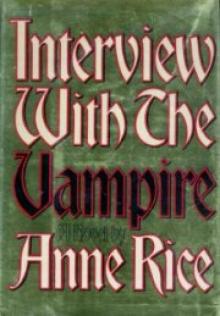 Interview with the Vampire tvc-1
Interview with the Vampire tvc-1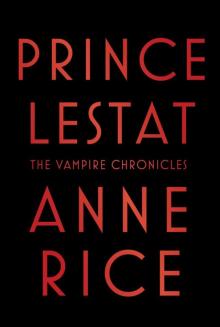 Prince Lestat: The Vampire Chronicles
Prince Lestat: The Vampire Chronicles